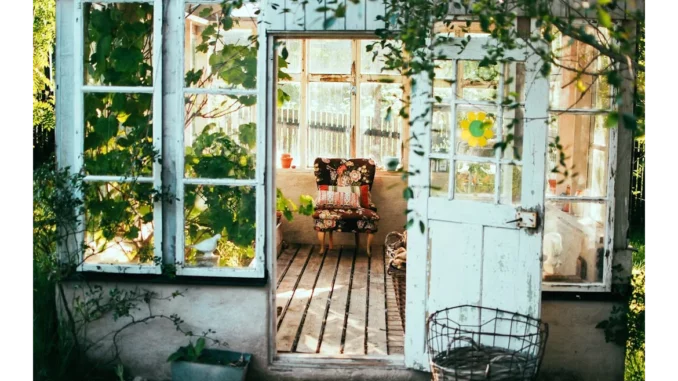
When it comes to garden design, many homeowners find themselves facing various challenges. Whether it’s creating privacy, dealing with small spaces, or working within a tight budget, these problems can feel overwhelming. Recently, I had the pleasure of speaking with Emma Thompson, a seasoned garden designer with over 15 years of experience in transforming outdoor spaces. Emma shared some invaluable insights and practical solutions to the seven most common garden design problems. Her expertise is sure to inspire and assist anyone looking to enhance their garden, especially those preparing to put their property on the market.
“One of the first things I always ask my clients is, ‘When are you planning to sell your property?'” Emma began. “Timing is crucial because different plants thrive at different times of the year. For instance, if you’re selling in June, you’ll want to focus on evergreens rather than deciduous trees.” This simple yet profound piece of advice sets the tone for the rest of our conversation, highlighting the importance of intentional planning.
1. Lack of Privacy
Many homeowners struggle with creating a sense of privacy in their gardens, especially in urban areas. “Privacy is often a top priority for my clients,” Emma noted. “There are several ways to achieve it without making your garden feel like a fortress.” She recommends using a combination of hedges, trees, and tall plants to create natural barriers. For immediate results, she suggests installing lattice panels or trellises with climbing plants like jasmine or ivy. “These solutions not only provide privacy but also add a touch of greenery and elegance to your garden,” Emma added.
2. Small Spaces
Designing a garden in a small space can be daunting, but Emma assures me that it’s entirely possible to create a stunning outdoor area, no matter the size. “The key is to think vertically,” she advised. “Use hanging baskets, wall-mounted planters, and tall, narrow plants to maximise space.” Emma also suggests incorporating multi-functional furniture, such as benches with built-in storage, to keep the area tidy and uncluttered. “Mirrors can also work wonders in small gardens by creating the illusion of more space,” she revealed.
3. Tight Budgets
A limited budget doesn’t mean you have to compromise on quality or aesthetics. “One of the best ways to save money is to focus on perennials rather than annuals,” Emma explained. “Perennials come back year after year, providing long-term value.” She also recommends sourcing plants from local garden centres or even swapping plants with neighbours. “DIY projects, like building your own raised beds or garden paths, can also be cost-effective and rewarding,” Emma pointed out.
4. Poor Soil Quality
Soil quality is a common issue that can hinder the success of your garden. “The first step is to get your soil tested,” Emma advised. “Knowing its pH level and nutrient content will help you choose the right plants.” She recommends adding organic matter, such as compost or well-rotted manure, to improve soil structure and fertility. “Raised beds are another great option if your soil is particularly poor,” Emma suggested. “They give you more control over the growing conditions and can be a beautiful addition to your garden.”
5. Limited Sunlight
Gardens with limited sunlight can still be lush and vibrant with the right plant choices. “Shade-tolerant plants are your best friends,” Emma said with a smile. “Ferns, hostas, and astilbes are excellent options for shady areas.” She also recommends using light-coloured paving and reflective surfaces to brighten up the space. “Strategically placing mirrors can also help bounce light around the garden,” Emma added.
6. Unattractive Views
Transforming an unattractive view into a garden feature can be a creative challenge. “One of my favourite solutions is to use focal points to draw attention away from the less appealing areas,” Emma shared. “Water features, sculptures, or a beautiful tree can serve as stunning distractions.” She also suggests using screening plants or decorative panels to hide unsightly views. “Sometimes, all it takes is a strategic planting arrangement to completely change the perspective of a space,” Emma said.
7. Seasonal Changes
Dealing with seasonal changes is a crucial aspect of garden design, especially for those looking to sell their property. “It’s important to plan for year-round interest,” Emma emphasised. “Incorporate a mix of evergreen and deciduous plants, as well as those with different blooming times.” She also suggests using plants with interesting foliage, bark, or berries to add visual interest during the off-season. “By planning carefully, you can ensure your garden looks its best no matter what time of year it is,” Emma concluded.
As our conversation came to an end, I was struck by Emma’s passion and expertise. Her practical tips and creative solutions offer a roadmap for anyone facing garden design challenges. Whether you’re preparing to sell your property or simply looking to improve your outdoor space, these insights can help you create a garden that is both beautiful and functional.
Harry Jenkins


Be the first to comment